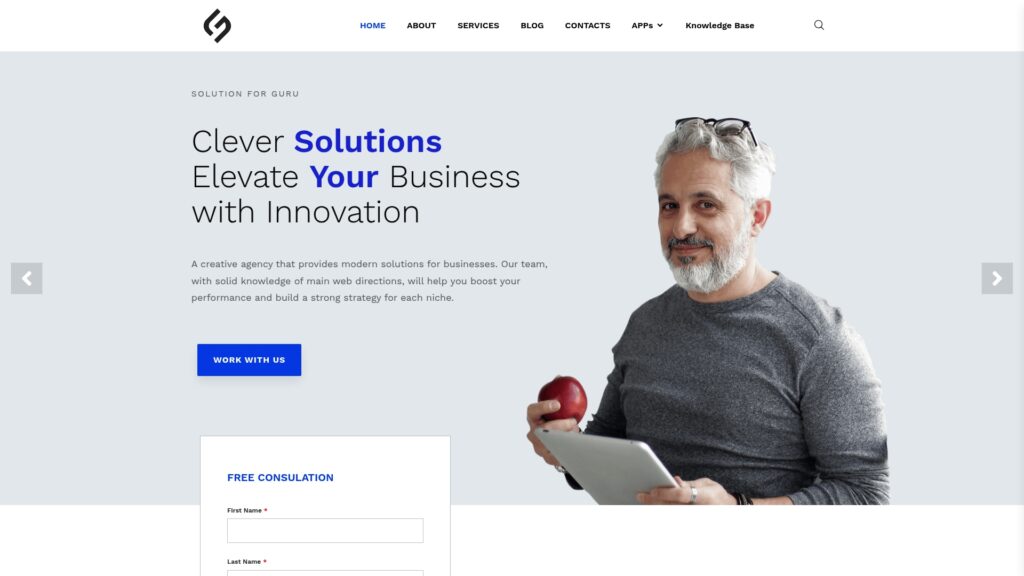How CRM Helps Align Sales and Marketing for Higher Conversions

The disconnect between sales and marketing teams represents one of the most costly yet persistent challenges facing modern organizations. Marketing generates leads that sales dismisses as unqualified, while sales complains about insufficient lead volume as marketing questions why their carefully nurtured prospects aren’t converting. This misalignment wastes resources, frustrates team members, and ultimately damages revenue performance. CRM technology offers powerful solutions to bridge this divide, creating shared visibility, establishing common metrics, and enabling collaborative workflows that transform adversarial relationships into productive partnerships driving measurably higher conversion rates.
Table of Contents
- Quick Summary
- What Are Sales and Marketing and How Do They Relate with CRM?
- Why Does Misalignment Between Sales and Marketing Occur?
- How Does CRM Create Shared Visibility Between Teams?
- What Role Does CRM Play in Lead Management and Qualification?
- What Metrics Should Sales and Marketing Track Together in CRM?
- What Strategies Foster Sales and Marketing Collaboration Through CRM?
- What Are the Best Practices for Sales and Marketing Alignment?
- Summing up
- Frequently Asked Questions
- Benefits of cooperation with Solution for Guru
Quick Summary
Sales and marketing alignment refers to the strategic coordination between two traditionally separate functions, where marketing generates awareness and qualified leads while sales converts those prospects into customers. CRM systems serve as the technological foundation enabling this alignment by providing shared platforms where both teams access unified customer data, collaborate on lead management, track progress through shared metrics, and maintain visibility into each other’s activities. Leading platforms like Salesforce CRM, Pipedrive CRM, Bigin by Zoho CRM, Zoho CRM, and Creatio CRM offer varying capabilities supporting sales-marketing alignment, from basic shared contact databases to sophisticated marketing automation integration, lead scoring systems, and comprehensive analytics. Organizations achieving strong sales-marketing alignment through effective CRM utilization report 36% higher customer retention rates, 38% higher sales win rates, and up to 208% more revenue from marketing efforts according to industry research.
What Are Sales and Marketing and How Do They Relate with CRM?
Sales and marketing represent distinct yet complementary business functions focused on customer acquisition and revenue generation. Marketing encompasses activities designed to create awareness, generate interest, educate prospects, and nurture relationships until buyers reach purchase readiness. This includes brand building, content creation, advertising, social media engagement, email campaigns, event marketing, and lead generation programs. Marketing operates at scale, communicating with large audiences through one-to-many channels and automated sequences.
Conversely, sales involves direct, personalized interaction with individual prospects and customers, guiding them through purchase decisions, addressing specific objections, negotiating terms, and closing deals. Sales representatives typically work one-to-one or one-to-few, building relationships through phone calls, meetings, demonstrations, and proposals. While marketing casts wide nets generating many leads, sales focuses intensively on smaller numbers of qualified prospects with higher conversion likelihood.
The relationship between these functions should flow seamlessly: marketing generates awareness and interest, capturing contact information from engaged prospects; nurtures these leads through educational content and targeted communications until they demonstrate purchase intent; qualifies leads based on fit and readiness; then hands qualified opportunities to sales for personalized engagement leading to closure. In practice, however, this handoff frequently breaks down, creating the alignment challenges that plague many organizations.
CRM systems bridge sales and marketing by providing shared technological infrastructure where both teams work from unified customer databases, maintain visibility into each other’s activities, and collaborate on lead management processes. Rather than marketing maintaining prospects in separate marketing automation platforms while sales works in disconnected CRM systems, integrated approaches ensure all customer information resides in centralized repositories accessible to both functions.
Salesforce CRM

Salesforce CRM exemplifies comprehensive sales-marketing alignment capabilities through its Marketing Cloud and Sales Cloud integration. Marketing teams execute campaigns, track engagement, and score leads within Marketing Cloud, while this data flows seamlessly into Sales Cloud where sales representatives see complete marketing interaction histories before first conversations. This integration eliminates the information gaps that occur when teams work in separate systems without visibility into each other’s activities.
Pipedrive CRM

Pipedrive CRM approaches alignment from a sales-centric perspective, providing straightforward lead tracking and pipeline management that marketing teams can access to understand how their leads progress through sales processes. While lacking sophisticated marketing automation features, Pipedrive enables basic alignment through shared visibility and simple lead source tracking that reveals which marketing initiatives generate the most valuable opportunities.
Bigin by Zoho CRM

For small businesses, Bigin by Zoho CRM offers accessible starting points for sales-marketing coordination. Its simplified interface enables both teams to access the same contact database, log activities, and track lead sources without overwhelming complexity. Though lacking advanced features, Bigin establishes fundamental alignment by preventing the separate database problem that fragments customer information across teams.
Zoho CRM

Zoho CRM provides robust alignment capabilities through its integrated marketing automation, campaign management, and sales force automation features. Marketing teams can execute email campaigns, track website visitors, and score leads directly within Zoho CRM, while sales teams immediately access this intelligence within the same platform. This native integration eliminates the technical complexity and data synchronization challenges inherent in connecting separate marketing and sales systems.
Creatio CRM

Creatio CRM distinguishes itself through unified customer journey management spanning marketing and sales. Its low-code platform enables organizations to design custom workflows orchestrating handoffs between teams, defining qualification criteria collaboratively, and automating lead routing based on agreed-upon rules. This process-centric approach ensures alignment becomes embedded in system workflows rather than depending solely on human discipline and communication.
Ultimately, CRM’s role in sales-marketing alignment extends beyond technology to enable strategic partnership. When both teams work within shared systems, view common metrics, and collaborate on process design, adversarial “us versus them” dynamics transform into collaborative problem-solving focused on shared revenue goals rather than competing departmental priorities.
Why Does Misalignment Between Sales and Marketing Occur?
Understanding the root causes of sales-marketing misalignment proves essential for designing effective solutions rather than merely treating symptoms. Several fundamental factors contribute to persistent disconnection between these functions.
Different Goals and Incentives
Sales and marketing typically operate under distinct performance metrics that can create conflicting priorities. Marketing teams face goals around lead generation volume, campaign engagement rates, website traffic, and brand awareness metrics. Their success gets measured by activities and top-of-funnel indicators that don’t directly correlate with closed revenue. Conversely, sales teams focus exclusively on closed deals and revenue attainment, caring little about intermediate metrics unless they translate directly into quota achievement.
These divergent metrics create natural tensions. Marketing celebrates generating thousands of leads while sales complains that only a tiny percentage meet their qualification standards. Sales demands “better quality” leads while marketing argues they need larger budgets to reach more qualified audiences. Without shared accountability for conversion rates and revenue outcomes, each team optimizes for their own metrics at the expense of overall business results.
Lack of Shared Definitions
Perhaps the most fundamental alignment problem stems from disagreement about basic definitions. What constitutes a “qualified lead”? When should prospects transition from marketing nurturing to sales engagement? What information must be captured before handoff occurs? Without clear, mutually agreed-upon answers to these questions, marketing delivers leads that sales rejects as premature, while sales complains about insufficient lead flow that marketing believes they’re already providing.
Salesforce CRM and Zoho CRM address this through customizable lead stages and status values that organizations can configure to reflect agreed-upon definitions. When both teams collaborate on defining these stages and commit to consistent usage, the shared vocabulary eliminates much miscommunication. Creatio CRM takes this further by allowing detailed process definition where qualification criteria are embedded in workflows, making definitions explicit and enforceable.
Information Silos and System Disconnection
When marketing and sales work in separate systems, information silos inevitably emerge. Marketing knows about prospect engagement with emails, website visits, and content downloads, but this intelligence doesn’t reach sales representatives making first contact. Sales learns about prospect pain points, budget constraints, and competitive pressures through conversations, but this valuable feedback doesn’t flow back to marketing to inform targeting and messaging.
This disconnection causes sales representatives to approach prospects without context about their previous interactions, creating awkward conversations where reps ask questions prospects already answered through form submissions. It forces marketing to continue nurturing leads that sales has already disqualified or even closed, wasting resources on irrelevant communications. It prevents marketing from understanding which lead sources and campaigns generate actual revenue versus vanity metrics like raw lead volume.
Cultural and Organizational Factors
Beyond operational issues, cultural factors often divide sales and marketing. Sales teams typically embody achievement-oriented, competitive cultures where individual performance determines success. Marketing teams often emphasize creativity, collaboration, and long-term brand building. These different cultural orientations can create mutual incomprehension where sales views marketing as detached from revenue reality while marketing sees sales as short-sighted and relationship-averse.
Organizational structure reinforces these divisions when sales and marketing report to different executives, occupy separate physical spaces, and participate in different meetings without regular cross-functional interaction. This separation breeds stereotypes and reduces empathy, making collaborative problem-solving difficult even when good intentions exist.
Inadequate Feedback Loops
Even when handoffs occur smoothly initially, lack of feedback mechanisms prevents continuous improvement. Marketing doesn’t learn whether their leads eventually converted, which campaigns produced the best customers, or what messaging resonated most effectively with successful deals. Sales doesn’t communicate back about lead quality issues, missing information, or timing problems that could inform marketing strategy adjustments.
Pipedrive CRM and Bigin by Zoho CRM, despite their simplicity, enable basic feedback through lead source tracking that reveals which marketing efforts generate deals. More sophisticated platforms like Salesforce CRM, Zoho CRM, and Creatio CRM provide comprehensive closed-loop reporting where marketing can track leads through the entire customer lifecycle, analyzing conversion rates, deal sizes, and customer lifetime values by campaign and channel.
Technology Complexity and Integration Challenges
Ironically, technology intended to improve coordination sometimes exacerbates misalignment. Organizations implementing separate best-of-breed marketing automation platforms and CRM systems face integration challenges that create data synchronization problems, field mapping inconsistencies, and duplicate records. When integration fails or performs poorly, teams blame each other for data quality issues while the underlying technical problems remain unaddressed.
Consequently, solving sales-marketing misalignment requires addressing these root causes through combination of clear process definition, shared metrics, cultural bridge-building, and appropriate technology providing unified visibility and seamless information flow between functions.
How Does CRM Create Shared Visibility Between Teams?

Shared visibility represents perhaps the most fundamental benefit CRM systems provide for sales-marketing alignment. When both teams access the same customer data and view identical interaction histories, the information asymmetry driving much misalignment disappears.
Unified Customer Database
CRM systems provide single sources of truth for customer and prospect information, eliminating the duplicate and conflicting records that plague organizations where teams maintain separate databases. Marketing’s email campaign system contains one version of contact details while sales’ spreadsheets contain another, leading to confusion about current information accuracy. Unified CRM databases ensure all teams reference identical information that updates consistently regardless of which team makes changes.
Salesforce CRM and Zoho CRM provide robust data management capabilities including duplicate detection, merge functionality, and validation rules maintaining data quality. These features prove essential when multiple teams contribute information, ensuring the unified database remains reliable rather than degrading into inconsistent mess that users stop trusting.
Complete Interaction History
Beyond basic contact information, CRM systems capture comprehensive interaction histories showing all touchpoints between organizations and prospects. Marketing emails opened, links clicked, forms submitted, webinars attended, content downloaded—all this engagement data flows into CRM records alongside sales calls logged, meetings held, proposals sent, and demos delivered.
This complete picture proves invaluable for both teams. Sales representatives approaching prospects for first time immediately understand previous engagement levels, content interests, and buying stage signals rather than starting conversations blind. Marketing teams see which leads receive sales attention, what objections arise during conversations, and which prospects remain stuck in sales pipelines requiring marketing re-engagement.
Creatio CRM excels at journey visualization, providing timeline views showing complete interaction sequences across marketing and sales touchpoints. These visual representations help both teams understand customer experiences holistically rather than viewing only their departmental slice of the relationship.
Real-Time Lead Status Visibility
CRM systems enable real-time visibility into lead status, allowing marketing to see immediately when sales accepts leads, begins working them, qualifies or disqualifies them, and ultimately closes deals or loses opportunities. This transparency eliminates the black hole where marketing hands leads to sales without ever learning their fate, wondering whether leads were ignored, disqualified inappropriately, or simply taking longer to convert than expected.
Similarly, sales representatives see new leads arriving from marketing campaigns in real-time, understand which campaigns generated specific prospects, and access campaign content that influenced lead generation. This context helps sales representatives tailor their outreach based on prospects’ demonstrated interests and previous content engagement.
Campaign Performance Visibility
Effective CRM implementations enable sales to view marketing campaign performance data while marketing accesses sales conversion metrics. This mutual visibility creates appreciation for each team’s challenges and contributions rather than maintaining ignorance breeding skepticism. When sales representatives see that marketing’s latest campaign generated 500 leads from 50,000 email sends, they better understand lead volume constraints. When marketing sees that sales converted 15% of their leads to opportunities but only 30% of those opportunities close, they recognize sales faces conversion challenges beyond lead quality.
Pipedrive CRM provides straightforward reporting accessible to all users, enabling both teams to view pipeline metrics, conversion rates, and lead source performance without requiring technical expertise. Salesforce CRM and Zoho CRM offer more sophisticated dashboards and reports that organizations can customize to highlight metrics relevant for cross-functional visibility.
Account-Level Coordination
For organizations pursuing account-based strategies, CRM account records provide shared workspaces where sales and marketing collaborate on target account engagement. Marketing can see which accounts sales prioritizes, who the key contacts are within those accounts, and what stage relationships have reached. Sales views marketing’s account-level campaigns, content engagement by account personnel, and intelligence gathered through marketing interactions.
Salesforce CRM particularly excels at account-centric views through its hierarchical account structures and related list displays showing all contacts, opportunities, and activities associated with accounts. Creatio CRM enables custom account workspace design matching specific organizational approaches to account-based strategies.
Accessibility and Permissions
Effective shared visibility requires appropriate access permissions ensuring both teams see relevant information without overwhelming detail or exposing sensitive competitive intelligence. Marketing teams need visibility into general lead status and conversion outcomes without necessarily accessing specific deal negotiations or pricing discussions. Sales teams benefit from marketing engagement data without needing access to campaign configuration details or marketing automation workflows.
Zoho CRM and Salesforce CRM provide granular permission controls enabling organizations to design role-based access models that balance transparency with appropriate information protection. These systems allow sharing specific object types and fields while restricting others, creating visibility where it drives alignment without exposing genuinely confidential information.
What Role Does CRM Play in Lead Management and Qualification?
Lead management and qualification represent critical processes where sales-marketing alignment directly impacts conversion rates. CRM systems provide infrastructure for defining, implementing, and continuously improving these processes collaboratively.
Standardized Lead Capture
CRM-integrated web forms, landing pages, and lead capture mechanisms ensure all leads enter the same system regardless of source. Whether prospects submit contact forms, attend webinars, download content, or engage through social media, CRM integration captures this information consistently with standardized fields that both sales and marketing require for effective follow-up.
Zoho CRM and Salesforce CRM provide form builders and embed codes enabling marketing teams to create lead capture mechanisms that feed directly into CRM, eliminating manual import processes prone to delays and errors. Creatio CRM offers similar capabilities within its marketing modules, maintaining seamless flow from initial capture through qualification and handoff.
Lead Scoring and Grading
Lead scoring uses CRM-tracked behavioral data (email opens, website visits, content downloads) and demographic information (company size, industry, title) to calculate numerical scores indicating purchase readiness and fit. These scores help prioritize which leads receive sales attention first, ensuring representatives focus on prospects most likely to convert rather than wasting time on premature or poor-fit opportunities.
Effective scoring models require sales-marketing collaboration on defining which behaviors and attributes indicate quality and readiness. Marketing understands engagement patterns while sales knows which prospect characteristics correlate with closed deals. Salesforce CRM through Pardot or Marketing Cloud provides sophisticated scoring capabilities, while Zoho CRM offers built-in scoring through its marketing automation features. Even Pipedrive CRM and Bigin by Zoho CRM enable basic custom field-based scoring approaches where organizations manually calculate and update scores.
Automated Lead Routing
CRM workflow automation can route leads to appropriate sales representatives based on territory, industry expertise, deal size, or other criteria established collaboratively between teams. This automation ensures immediate lead distribution without manual handoff delays that cause leads to go cold. It also enforces equitable distribution preventing cherry-picking where representatives only pursue obviously attractive leads while ignoring others.
Creatio CRM excels at sophisticated routing through its process engine, where organizations design multi-criteria routing logic matching leads to ideal representatives based on complex rule sets. Salesforce CRM and Zoho CRM provide robust assignment rules achieving similar outcomes, while Pipedrive CRM offers simpler manual assignment workflows suitable for smaller teams.
Progressive Qualification
Rather than binary qualified/unqualified determinations, modern lead management recognizes qualification as progressive process where leads advance through stages as they demonstrate increasing fit and readiness. CRM systems track this progression through lead status fields, enabling nuanced distinction between raw inquiry, marketing-qualified lead (MQL), sales-accepted lead (SAL), and sales-qualified lead (SQL).
Marketing qualifies leads to MQL status when behavioral engagement and demographic attributes indicate reasonable fit and initial interest. Sales accepts leads as SALs after initial review confirms basic qualifications, then further qualifies to SQL after direct contact validates genuine opportunity. This staged approach creates clear handoff points while acknowledging that full qualification requires sales interaction beyond what marketing can determine through digital engagement alone.
Disqualification and Recycling
Not all leads warrant immediate sales pursuit. Some prospects express interest prematurely, lack budget, or don’t fit ideal customer profiles. Rather than forcing sales to pursue unsuitable leads or completely discarding potentially valuable future opportunities, CRM workflows enable disqualification back to marketing for continued nurturing until circumstances change.
Zoho CRM and Salesforce CRM support this recycling through status values and automated workflows that move disqualified leads back to marketing nurture campaigns. This closed loop ensures prospects remain engaged appropriately based on their readiness rather than receiving premature sales pressure or falling into complete neglect.
Data Enrichment and Validation
Quality lead data proves essential for both qualification and effective sales outreach. CRM integrations with data enrichment services can automatically append missing information, standardize company names, validate email addresses, and enhance profiles with firmographic and technographic intelligence. This automated enrichment ensures leads arrive to sales with complete, accurate information enabling productive first conversations.
Salesforce CRM offers the most extensive enrichment ecosystem through Data.com and numerous third-party integrations. Zoho CRM provides similar capabilities through its enrichment features and marketplace integrations. Even smaller platforms benefit from enrichment through integration with services like Clearbit or ZoomInfo, ensuring data quality regardless of CRM sophistication.
What Metrics Should Sales and Marketing Track Together in CRM?
Shared metrics represent crucial alignment mechanisms, creating common language and mutual accountability for business outcomes rather than separate departmental scorecards that can conflict with overall organizational goals.
Lead-to-Opportunity Conversion Rate
This fundamental metric measures what percentage of marketing-generated leads sales qualifies as legitimate opportunities worthy of active pursuit. Low conversion rates might indicate lead quality issues, misaligned targeting, or sales being overly selective. High rates suggest effective marketing targeting and appropriate qualification standards.
Both teams should monitor this metric collaboratively, investigating drivers of changes over time. Salesforce CRM and Zoho CRM can calculate conversion rates automatically through reports comparing lead volume to opportunity creation, segmented by lead source, campaign, or time period revealing patterns requiring attention.
Marketing-Sourced Revenue
Rather than simply tracking lead volume, marketing should share accountability for revenue outcomes. Marketing-sourced revenue metrics measure what portion of total revenue originated from marketing-generated leads versus sales-sourced opportunities. This metric aligns marketing incentives with business outcomes, encouraging focus on quality and conversion rather than vanity metrics like impressions or raw lead counts.
Salesforce CRM and Zoho CRM enable tracking revenue attribution through custom fields on opportunities identifying original lead sources. Even Pipedrive CRM supports basic source tracking enabling calculation of marketing’s revenue contribution. Organizations should establish target percentages for marketing-sourced revenue, creating shared accountability for achieving these goals.
Sales Cycle Length
Tracking average time from initial contact to closed deal reveals process efficiency and can highlight where prospects get stuck. Marketing influences cycle length through lead quality, prospect education level, and expectation setting. Well-qualified, properly educated leads should progress faster than cold prospects or those attracted by misleading marketing messages.
CRM systems automatically calculate cycle length using opportunity creation and close dates. Analysis should segment cycle length by lead source and campaign, revealing which marketing initiatives generate not just volume but efficiently-converting opportunities. Creatio CRM and Salesforce CRM provide sophisticated analytics showing cycle length trends and comparisons across segments.
Customer Acquisition Cost
Understanding total customer acquisition cost requires combining marketing and sales expenses. Marketing’s campaign costs plus sales representative time, tools, and overhead divided by customers acquired reveals true acquisition economics. This shared metric prevents optimization of departmental budgets at the expense of overall efficiency.
While CRM systems don’t typically track detailed financial data, integration with financial systems or manual data entry enables acquisition cost analysis within CRM reporting frameworks. Salesforce CRM through Einstein Analytics can incorporate financial data creating comprehensive acquisition cost dashboards accessible to both teams.
Marketing Qualified Lead (MQL) Volume and Quality
Marketing maintains primary accountability for MQL generation, but quality metrics require sales input. Tracking MQL volume, sales acceptance rates, and ultimate conversion patterns creates balanced assessment of marketing lead generation effectiveness that considers both quantity and quality dimensions.
Zoho CRM and Salesforce CRM can track lead status changes from MQL to SAL (sales-accepted lead) to SQL (sales-qualified lead), calculating conversion rates at each stage. This funnel analysis reveals where qualification breaks down, whether during marketing qualification, sales acceptance, or later qualification stages.
Win/Loss Analysis
Systematic tracking of why deals close or fail provides invaluable intelligence for both teams. Sales learns which competitive positions succeed, what objections prove insurmountable, and which prospect characteristics correlate with wins versus losses. Marketing gains insights about messaging effectiveness, competitive positioning needs, and ideal customer profile refinement.
CRM close-reason tracking captures this intelligence systematically rather than leaving it in anecdotal conversations. Creatio CRM, Salesforce CRM, and Zoho CRM all enable custom close-reason fields that sales completes when marking opportunities as won or lost. Regular analysis of these patterns should occur collaboratively, with both teams contributing to interpretation and strategic responses.
| Key Alignment Metric | Why It Matters | CRM Tracking Capability |
| Lead-to-Opportunity Conversion | Measures lead quality and qualification effectiveness | Automatic calculation in all major CRMs |
| Opportunity-to-Close Rate | Reveals sales effectiveness and campaign positioning accuracy | Standard reporting in all platforms |
| Marketing-Sourced Revenue | Aligns marketing with revenue accountability | Requires lead source tracking (available in all) |
| Sales Cycle Length | Indicates process efficiency and lead readiness | Automatic calculation using date fields |
| Customer Acquisition Cost | Shows true economics of customer acquisition | Requires financial data integration |
| MQL Acceptance Rate | Measures alignment on lead quality standards | Custom reporting on status changes |
| Win/Loss Ratios by Source | Reveals which campaigns generate closeable deals | Custom fields and reporting |
What Strategies Foster Sales and Marketing Collaboration Through CRM?

Beyond technical capabilities, fostering genuine collaboration requires intentional strategies that use CRM as enabler rather than relying on technology alone to bridge organizational gaps.
Joint Planning and Goal Setting
Sales and marketing should participate together in planning processes, establishing shared revenue targets and agreeing upon each function’s contribution to overall goals. CRM data should inform these planning sessions, with historical conversion rates, pipeline velocity, and capacity analysis grounding projections in reality rather than aspirational thinking.
When both teams commit to shared plans documented in CRM through goal-tracking features, mutual accountability replaces finger-pointing when results fall short. Salesforce CRM and Zoho CRM enable goal tracking at team and individual levels, providing visibility into progress against commitments that facilitates productive performance discussions.
Regular Alignment Meetings
Formal recurring meetings where sales and marketing review CRM data together, discuss what’s working and what needs adjustment, and collaboratively problem-solve around challenges prevent relationship drift and ensure continuous alignment. These meetings should focus on shared metrics, lead quality trends, conversion performance, and process refinement rather than becoming complaint sessions.
Effective meetings reference CRM dashboards and reports visible to all participants, grounding discussions in data rather than anecdotes. Creatio CRM, Salesforce CRM, and Zoho CRM dashboard capabilities enable creating alignment meeting views displaying key metrics both teams care about, facilitating productive data-driven conversations.
Cross-Functional CRM Training
When sales and marketing teams participate in joint CRM training, they develop shared understanding of system capabilities, learn how their colleagues use the platform, and build appreciation for interconnection between their workflows. Cross-functional training also provides forums for discussing process improvements and resolving confusion about system usage or expectations.
Organizations implementing Salesforce CRM, Zoho CRM, or Creatio CRM should include representatives from both teams in training sessions rather than conducting separate departmental training. This shared learning experience builds relationships while ensuring consistent understanding of how the CRM supports collaborative workflows.
Shared Success Celebrations
Recognizing and celebrating wins that required sales-marketing collaboration reinforces partnership value and creates positive associations with joint efforts. When particularly successful campaigns generate quality pipeline that sales converts effectively, public recognition of both teams’ contributions validates collaborative approach and motivates continued teamwork.
CRM data provides objective basis for identifying these successes, whether through campaign ROI reports showing exceptional results or individual deal records showing strong marketing engagement leading to sales success. Salesforce CRM and Zoho CRM reporting can identify these success stories systematically, providing material for recognition communications.
Job Rotation or Shadowing Programs
Having marketing team members spend time with sales representatives on calls and meetings provides invaluable perspective on sales challenges, customer objections, and competitive situations. Similarly, sales representatives participating in marketing campaign planning gain appreciation for marketing’s strategic thinking and creative process. These experiences build empathy and mutual respect that improve daily collaboration.
While CRM doesn’t directly facilitate job rotation, the shared visibility it provides enables productive shadowing experiences. Marketing personnel accessing Salesforce CRM or Zoho CRM can review upcoming sales activities and request to participate, while sales can observe marketing’s campaign execution and lead nurturing sequences within the same systems.
What Are the Best Practices for Sales and Marketing Alignment?
Achieving and sustaining sales-marketing alignment requires ongoing attention and disciplined adherence to practices that maintain partnership even as personnel change, strategies evolve, and organizational pressures create competing priorities.
Start with Executive Alignment
Sales and marketing alignment begins at executive level. When sales and marketing leaders model collaborative behavior, establish shared goals, and hold their teams accountable for partnership, organizational culture shifts toward collaboration. Conversely, when executives operate territorially or tolerate departmental blame-shifting, alignment initiatives struggle despite team-level good intentions.
Executive leaders should meet regularly to review CRM-based alignment metrics, problem-solve around systemic issues, and ensure both teams receive appropriate resources and support. Their visible partnership legitimizes alignment efforts and signals that collaboration isn’t optional nice-to-have but core organizational expectation.
Document Processes and Agreements
Verbal agreements about qualification criteria, handoff processes, or SLAs inevitably suffer from misunderstanding and memory decay. Written documentation provides reference points preventing future disputes while onboarding new team members to established processes. These documents should be living resources revised collaboratively as processes improve rather than static policies that become outdated.
CRM systems themselves can document certain aspects of agreed-upon processes through field configurations, workflow automations, and validation rules that enforce standards. Creatio CRM particularly excels at process documentation through its visual workflow designer that becomes both technical specification and business process documentation simultaneously.
Invest in Integration and Data Quality
Sales-marketing alignment suffers when underlying technology stack remains fragmented or data quality degrades below usefulness threshold. Organizations should invest appropriately in CRM integration with marketing automation platforms, maintaining clean data through regular hygiene initiatives, and ensuring systems perform reliably without frustrating users through errors or slow performance.
Salesforce CRM and Zoho CRM provide robust data management features including duplicate detection, validation rules, and data quality dashboards identifying issues requiring attention. Organizations should designate data stewards or administrators responsible for maintaining quality rather than assuming it will occur organically without dedicated attention.
Provide Ongoing Training and Support
CRM capabilities evolve through platform updates, organizational strategies change requiring new processes, and team turnover creates continuous training needs. Organizations should provide regular refresher training, announce new features or process changes clearly, and maintain readily accessible documentation supporting self-service problem resolution.
Salesforce CRM Trailhead provides extensive free training resources that organizations can supplement with custom content addressing specific configurations. Zoho CRM similarly offers learning resources alongside customer success management support. Even Pipedrive CRM and Bigin by Zoho CRM provide knowledge bases and tutorial content helping users maximize platform value.
Measure What Matters
Alignment metrics should focus on outcomes that matter to overall business success—conversion rates, revenue, customer acquisition cost, retention—rather than activity metrics that can be gamed or optimized independently from results. Both teams should share accountability for these outcome metrics, creating mutual incentive for collaboration rather than departmental optimization.
CRM reporting should make these critical metrics highly visible through dashboards, automated reports, and regular review processes. Salesforce CRM, Zoho CRM, and Creatio CRM enable creating executive dashboards showing alignment health through shared metrics, providing early warning when trends deteriorate and requiring intervention.
Summing up
Aligning sales and marketing is essential for any business aiming to increase conversions and create a seamless customer experience. A modern CRM system plays a central role in bridging the gap between these two departments by providing a unified platform where data, communication, and processes come together. With shared access to real-time insights, teams gain a clearer understanding of customer behavior, campaign performance, and lead quality. This not only eliminates silos but also ensures that both teams work toward the same goals using consistent, data-driven strategies.
CRM automation further strengthens this alignment by streamlining lead nurturing, follow-ups, and reporting. Marketing can deliver more personalized and targeted campaigns, while sales receives better-qualified leads supported by reliable data. As a result, teams can collaborate more effectively, reduce friction, and shorten the sales cycle.
Ultimately, a CRM empowers organizations to build a customer-centric workflow that boosts efficiency and drives revenue growth. By integrating shared metrics, improving communication, and enhancing visibility, it turns sales and marketing into a synchronized engine that delivers higher conversions and long-term business success.
The journey toward alignment requires patience, as cultural transformation and process maturation proceed gradually rather than through sudden implementation breakthroughs. However, organizations committing to this journey and leveraging CRM technology as alignment enabler consistently achieve measurably superior business results justifying the effort, investment, and sustained attention that genuine sales-marketing partnership demands.
Frequently Asked Questions
A CRM centralizes customer data, making it accessible to both teams. This ensures consistent messaging, smoother lead handoffs, and better coordination throughout the buyer journey.
Lead scoring, automated workflows, segmentation, analytics, and real-time reporting help teams target prospects more effectively and convert them faster.
Shared data eliminates miscommunication, ensures both teams work toward the same goals, and helps create accurate buyer personas and targeted campaigns.
Yes. Automation reduces manual tasks, speeds up follow-ups, and ensures timely communication, allowing teams to focus on strategy and high-quality interactions.
Sales and marketing alignment represents ongoing journey rather than destination achieved through finite project. However, organizations can expect to see initial improvements within 3-6 months of implementing structured alignment processes supported by appropriate CRM configuration, with substantial maturation occurring over 12-18 months as cultural changes solidify and processes refine through experience.
The timeline varies significantly based on starting conditions and organizational factors. Companies with pre-existing collaborative cultures, clear processes, and relatively simple go-to-market motions achieve alignment faster than those with deeply entrenched silos, undefined processes, or highly complex sales involving long cycles and multiple products. Small organizations implementing straightforward platforms like Pipedrive CRM or Bigin by Zoho CRM often see faster initial progress than enterprises deploying sophisticated Salesforce CRM implementations requiring extensive customization and change management.
Benefits of cooperation with Solution for Guru
Partnering with Solution for Guru gives businesses access to expert guidance tailored for CRM-driven alignment of sales and marketing. Their team helps you choose the right CRM (e.g. platforms like Pipedrive, Zoho CRM or others) that matches your business needs, and then implements and customizes it for your processes. This ensures smooth data centralization, automated workflows, and consistent collaboration between departments — eliminating silos and preventing duplicated or lost leads.

Beyond CRM implementation, Solution for Guru can integrate CRM with your website, marketing tools and other SaaS platforms — giving you a unified digital ecosystem. Their experience in web-development, automation and digital strategy enables faster deployment and better adoption by teams, which means you start seeing improvements (in lead quality, conversion, team productivity) sooner rather than later.
In short: working with Solution for Guru makes the CRM transition smoother, faster and more effective — helping sales and marketing truly align, operate as one, and drive higher conversions with minimal friction.
Recommended:
- What Should Investors Know About Salesforce Stock?
- What KPIs Should Every Business Track in Their CRM System?
- What is CRM Database?
- How Can CRM Analytics Transform Your Salesforce Experience?
- CRM Management
- Getting Started With Pipedrive
- What is Pipedrive CRM?
- Choosing the best low-cost CRM
- Top Microsoft Dynamics Alternatives and Competitors
- CRM Cost Comparison of Top Platforms




